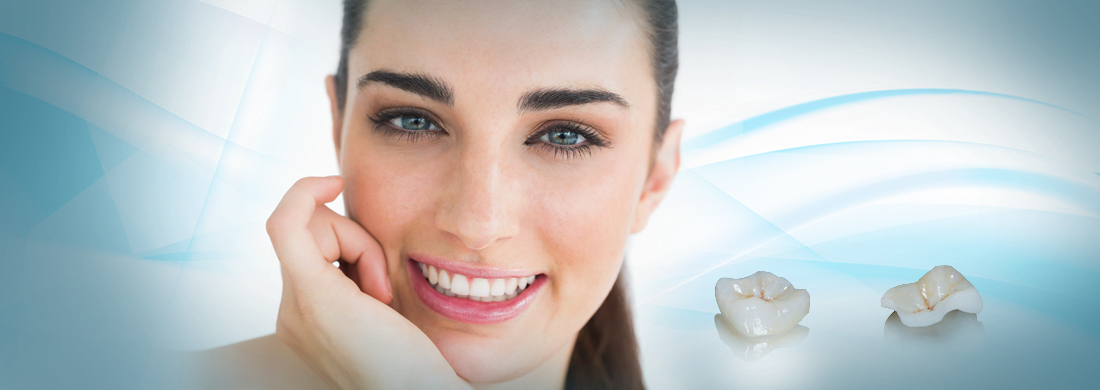/ drdtduyguaytac
Inlay-Onlay Fillings

Inlay-Onlay Fillings
How are
inlay-onlay fillings made?
Inlay and onlay fillings can be preferred as an aesthetic treatment in case there is not enough dental tissue to support the filling and the teeth are not damaged enough to make a crown. This is a treatment option between filling and crown. Before starting the application, all decay and damaged tissue in the mouth are cleaned and the restoration is done outside the mouth by taking an impression of the tooth. Inlay-onlay restorations are prepared either as composite or porcelain depending on the situation, and then glued onto the teeth with special methods.
What is the content of Inlays-onlays?
Inlays-onlays are ceramic and fiber-reinforced composite. Material is selected depending on the contacted material; such as natural tooth, composite, or porcelain.
In what circumstances should Inlay-onlays be preferred?
After cleaning the area that has decayed or undergone canal treatment, there is insufficient size of dental tissue. These teeth do not make contact with neighboring teeth causing food we eat to accumulate in this gap and create problems in the teeth and gums. Since they are prepared on a model, inlays and onlays with a desired anatomical form and contact are also more resistant to abrasion and chewing pressures than classical filling material.
How long do Inlays-onlays last?
Inlays or onlays can be maintained for many years, depending on internal and external conditions.
How should I take care of my inlays and onlays?
You should brush, flossing and visit your dentist as usual.
What are the advantages of porcelain inlays and onlays?
Inlays and onlays are aesthetic and durable. The remaining tooth tissue is healthy, the risk of leakage and new decay is minimal, and the dental restoration fit is precise.
Are there risks of inlays-onlays?
When inlays and onlays are cemented, they may not stick together if they come in contact with spit. Therefore, the dentist should have very good humidity control.
Inlay and onlay fillings can be preferred as an aesthetic treatment in case there is not enough dental tissue to support the filling and the teeth are not damaged enough to make a crown. This is a treatment option between filling and crown. Before starting the application, all decay and damaged tissue in the mouth are cleaned and the restoration is done outside the mouth by taking an impression of the tooth. Inlay-onlay restorations are prepared either as composite or porcelain depending on the situation, and then glued onto the teeth with special methods.
What is the content of Inlays-onlays?
Inlays-onlays are ceramic and fiber-reinforced composite. Material is selected depending on the contacted material; such as natural tooth, composite, or porcelain.
In what circumstances should Inlay-onlays be preferred?
After cleaning the area that has decayed or undergone canal treatment, there is insufficient size of dental tissue. These teeth do not make contact with neighboring teeth causing food we eat to accumulate in this gap and create problems in the teeth and gums. Since they are prepared on a model, inlays and onlays with a desired anatomical form and contact are also more resistant to abrasion and chewing pressures than classical filling material.
How long do Inlays-onlays last?
Inlays or onlays can be maintained for many years, depending on internal and external conditions.
How should I take care of my inlays and onlays?
You should brush, flossing and visit your dentist as usual.
What are the advantages of porcelain inlays and onlays?
Inlays and onlays are aesthetic and durable. The remaining tooth tissue is healthy, the risk of leakage and new decay is minimal, and the dental restoration fit is precise.
Are there risks of inlays-onlays?
When inlays and onlays are cemented, they may not stick together if they come in contact with spit. Therefore, the dentist should have very good humidity control.